TO
| Author | Title | Subject | Date | Publication Type | ||
|---|---|---|---|---|---|---|
| 1 |
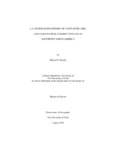 |
Blissett, Shawn D | Late holocene history of vegetation, fire, and climate from a desert wetland in Southwest North America | Cienega; Desert wetland; Medieval climate anomaly; Paleo fire record; Palynology; Southwest north america; Paleoclimatology | 2010 | thesis |
| 2 |
 |
Balzotti, Christopher Stephen | Exploring the use of fine resolution nested ecological niche models to identify greater sage-grouse (Centrocercus urophasianus) habitat and connectivity potential across a diverse landscape | Climate change; Habitat model; Landscape ecology; Niche model; Sagebrush; Sage-grouse | 2014-12 | dissertation |
| 3 |
 |
Spencer, Jessica D. | An 8,000-year fire and vegetation history of an oak savanna in East Central Minnesota | Charcoal; Fire; Minnesota; Oak savanna; Pollen; Sherburne | 2012-05 | thesis |
| 4 |
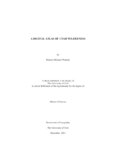 |
Warnick, Richard Michael | A digital atlas of Utah wilderness | Atlas; geography; GIS; public lands; Utah; wilderness | 2011-12 | thesis |
| 5 |
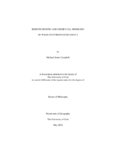 |
Campbell, Michael James | Remote sensing and geospatial modeling of wildland firefighter safety | Remote sensing | 2018 | dissertation |
| 6 |
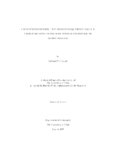 |
Conrad, Edward C. | Using species distribution models to quantify climate change impacts on the rosy-finch superspecies: an alpine obligate | boosted regression trees; calibrated AUC; climate change impacts; Leucosticte; niche modeling; random forest regression trees | 2015-08 | thesis |
| 7 |
 |
Cao, Lina | Anthropogenic habitat disturbance and the dynamics of hantavirus using remote sensing, GIS, and a spatially explicit agent-based model | Agent-based model; deer mouse; GIS; hantavirus; MODIS; peromyscus maniculatus | 2010-08 | dissertation |
| 8 |
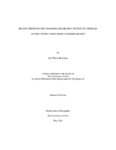 |
Housman, Ian Wilson | Recent trends in the changing geographic extent of Cienegas of the United States/Mexico border region | Ciénega; Desiccation; GIS; Landsat; Remote sensing; Wetlands | 2011-05 | thesis |
| 9 |
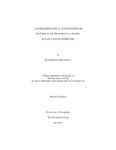 |
Higby Halseth, Deanna Renee | A paleolimnological investigation of historical environmental change in East Canyon Reservoir | East Canyon Reservoir; Paleolimnology; Remote sensing; Reservoir; Utah; Water resources | 2011-05 | thesis |
| 10 |
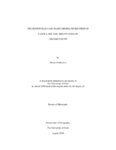 |
Nishizawa, Shizuo | Bonneville lake basin shoreline records of large lake and abrupt climate change events | Abrupt climate change events; Lake Bonneville; Lake surface area; Monsoons; Shoreline records | 2010-07 | dissertation |
| 11 |
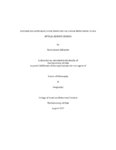 |
Selkowitz, David James | Automated approaches for snow and ice cover monitoring using optical remote sensing | Geography | 2017 | dissertation |
| 12 |
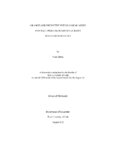 |
Zhang, Yuan | A rangeland predictive phenological model for the upper Colorado River Basin and its web delivery | Decision support system; Multivariate adaptive regression splines; Phenological modeling; Phenology; Remote sensing; Upper Colorado River Basin | 2013-08 | dissertation |
| 13 |
 |
Farnham, Delanie R | Child growth as a measure of resilience to food insecurity in burkina faso | Burkina Faso; Childhood Malnutrition; Food Security; Quantile Regression; Resilience | 2017 | thesis |
| 14 |
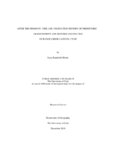 |
Morris, Stacy Randolph | After the Fremont: fire and vegetation history of prehistoric abandonment and historic occupation of Range Creek Canyon, Utah | Fire, Fremont; Native American; Range Creek Canyon; Vegetation | 2010-08 | thesis |
| 15 |
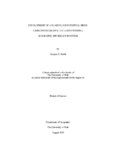 |
Smith, Gregory E | Development of a flash flood potential index using physiographic data sets within a geographic information system | Flash flood; Storm runoff | 2010 | thesis |
| 16 |
 |
Schaaf, Abigail N | Using hyperspectral data to classify vegetation at the plant functional type-level in mountain terrain at three spatial resolutions | Hyperspectral; Mountain terrain; Plant functional type; Spatial resolution; Spectral mixture analysis; Vegetation classification | 2010 | thesis |
| 17 |
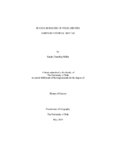 |
Miller, Sandra Tremblay | Spatial modeling of wildland fire ignition potential in Utah | 2019 | thesis | |
| 18 |
 |
Fryer, Gregory K. | Wildland firefighter entrapment avoidance: developing evacuation trigger points utilizing the Wildland Urban Interface Evacuation (WUIVAC) fire spread model | Wildfire entrapment; firefighter entrapment; evacuation trigger points; flamMap; GIS; wildfire spread modeling; wildland fire; wildland urban interface evacuation | 2012-05 | thesis |
| 19 |
 |
Li, Dapeng | Modeling wildfire evacuation as a coupled human-environmental system using triggers | fire spread modeling; GIS; reverse geocoding; traffic simulation; triggers; wildfire evacuation | 2016 | dissertation |
| 20 |
 |
Li, Dapeng | Modeling wildfire evacuation as a coupled human-environmental system using triggers | fire spread modeling; GIS; reverse geocoding; traffic simulation; triggers; wildfire evacuation | 2016 | dissertation |
| 21 |
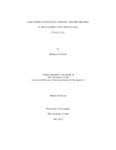 |
Koll, Rebecca Ann | Long-term vegetation, climate, and fire history in the Eastern Uinta Mountains, Utah, U.S.A. | 2012-05 | thesis | |
| 22 |
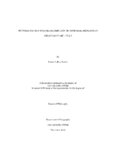 |
Baskin, Robert LeRoy | Occurrence and spatial distribution of microbial bioherms in Great Salt Lake, Utah | Distribution; Great Salt Lake; Microbial bioherm; Microbialite; Stromatolite; Thrombolite | 2014-12 | dissertation |
| 23 |
 |
Headman, Alexander O. | Evaluation of fire regime shifts in boreal Alaska through the use of sedimentary charcoal | Pure sciences; Health and environmental sciences; Earth sciences; Paleoecology; Statistics; Environmental science | 2016 | thesis |
| 24 |
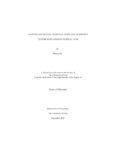 |
Jin, Zhenyu | Mapping and spatial-temporal modeling of Bromus tectorum invasion in Central Utah | Cheatgrass; NDVI time-series; Remote sensing; Spatial-temporal modeling; Utah; Bromus tectorum | 2011-11 | dissertation |
| 25 |
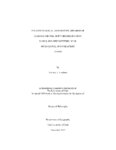 |
Lundeen, Zachary J. | Paleoecological and isotropic records of climate change and variability from lakes and speleothems, Bear River Range, Southeastern Idaho | Holocene; Idaho; Paleoclimate; Paleoecology; Pollen; Speleothem | 2012-12 | dissertation |
